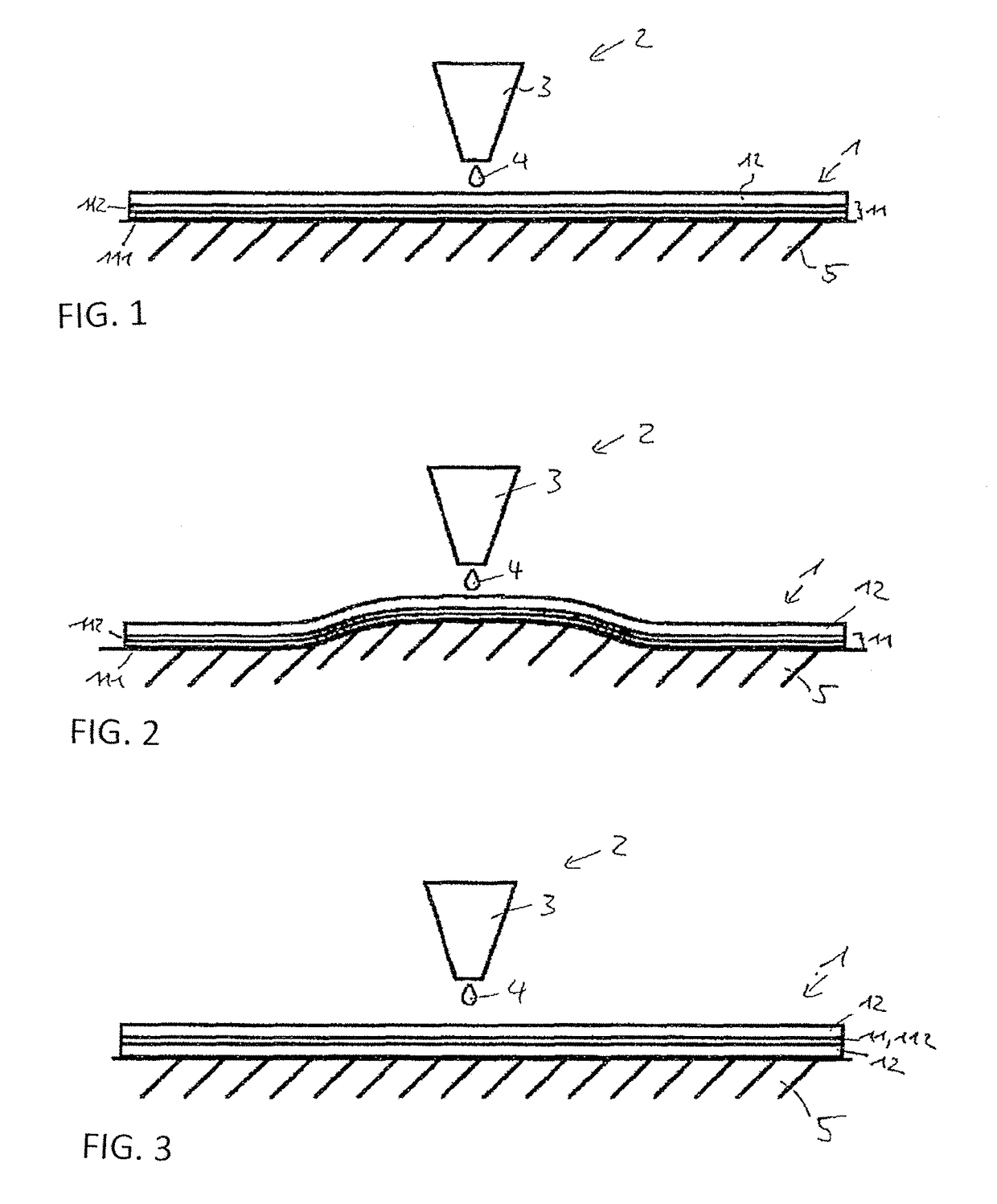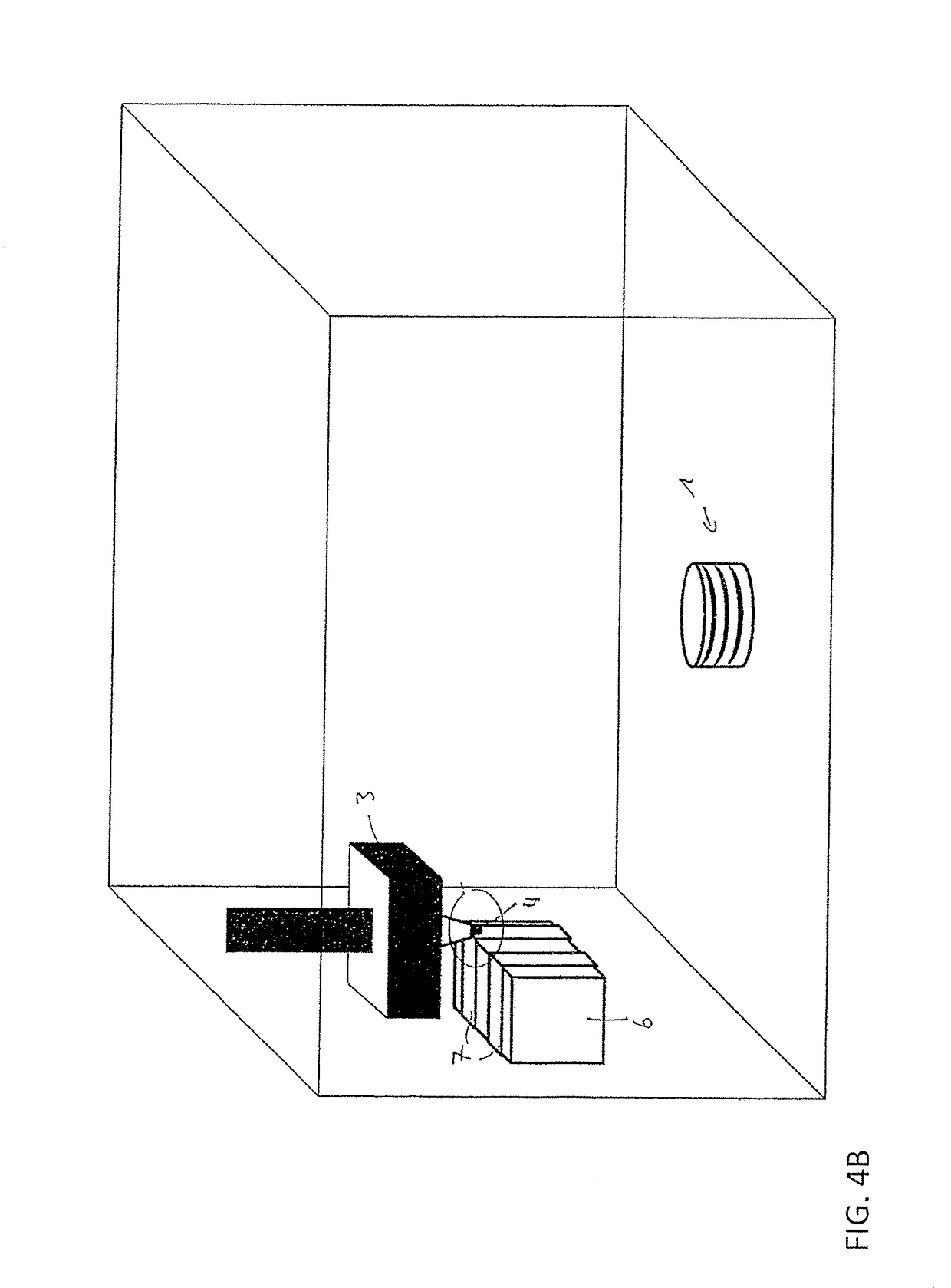Method of 3D printing plastic molding compound on foil ply
- Summary
- Abstract
- Description
- Claims
- Application Information
AI Technical Summary
Benefits of technology
Problems solved by technology
Method used
Image
Examples
Embodiment Construction
[0074]A molded body 1 comprises a foil ply 11, to which a plastic molding compound 12 is applied by means of a three-dimensional printing method.
[0075]The foil ply 11 can be a lamination foil or a transfer foil in this case. In the latter case, the foil ply 11 comprises a carrier ply 111, on which the transfer ply 112, which finally remains in the molded body, is attached so it is detachable.
[0076]A layer thickness of the foil ply 11 is preferably 10 μm to 250 μm, particularly preferably 20 μm to 250 μm.
[0077]The foil ply 11 can have an adhesion-promoter layer, which is not shown in the figures. The plastic molding compound 12 is then applied to this adhesion-promoter layer. It can be a plastic which is chemically related to the plastic molding compound in this case and / or a heat-activatable adhesive, for example, adhesive based on polyvinyl chloride (PVC) or based on acrylics or adhesive based on mixtures of PVC and acrylics.
[0078]Furthermore, the foil ply can comprise decorative o...
PUM
| Property | Measurement | Unit |
|---|---|---|
| Temperature | aaaaa | aaaaa |
| Temperature | aaaaa | aaaaa |
| Thickness | aaaaa | aaaaa |
Abstract
Description
Claims
Application Information
 Login to View More
Login to View More - R&D
- Intellectual Property
- Life Sciences
- Materials
- Tech Scout
- Unparalleled Data Quality
- Higher Quality Content
- 60% Fewer Hallucinations
Browse by: Latest US Patents, China's latest patents, Technical Efficacy Thesaurus, Application Domain, Technology Topic, Popular Technical Reports.
© 2025 PatSnap. All rights reserved.Legal|Privacy policy|Modern Slavery Act Transparency Statement|Sitemap|About US| Contact US: help@patsnap.com



